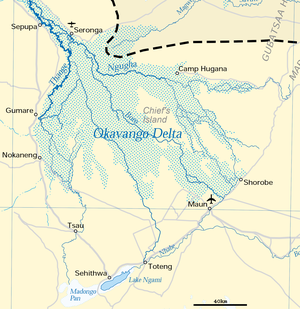Friday, May 27, 2016
Wednesday, May 25, 2016
Monday, May 23, 2016
Tuesday, May 3, 2016
An endorheic basin (from the Ancient Greek: ἔνδον, éndon, "within" and ῥεῖν, rheîn, "to flow") is a closed drainage basin that retains water and allows no outflow to other external bodies of water, such as rivers or oceans, but converges instead into lakes or swamps, permanent or seasonal, that equilibrate through evaporation. Such a basin may also be referred to as a closed or terminal basin or as an internal drainage system.
Normally, water that has accrued in a drainage basin eventually flows out through rivers or streams on the Earth's surface or by undergrounddiffusion through permeable rock, ultimately ending up in the oceans. However, in an endorheic basin, rain (or other precipitation) that falls within it does not flow out but may only leave the drainage system by evaporation and seepage. The bottom of such a basin is typically occupied by asalt lake or salt pan.
Endorheic regions, in contrast to exorheic regions which flow to the ocean in geologically defined patterns, are closed hydrologic systems. Their surface waters drain to inland terminal locations where the water evaporates or seeps into the ground, having no access to discharge into the sea.[1] Endorheic water bodies include some of the largest lakes in the world, such as the Aral Sea (formerly) and the Caspian Sea, the world's largest saline inland sea.[2]
Most endorheic basins are arid, although there are many notable exceptions, such as the Valley of Mexico, the Lake Tahoe region, and various regions in the Caspian Basin.
Endorheic basins can be massively and rapidly affected by climate change and excessive water abstraction. An exorheic lake naturally remains at an overflow level, so water flow into the lake may be many times more than is needed to maintain its present size. In contrast, an endorheic basin has no outlet, so any loss of water intake can immediately begin to shrink the lake. In the past century or so, many very large endorheic lakes have been reduced to small remnants of their former size, as with Lake Chad and Lake Urmia, or gone completely as have Tulare Lakeand Fucine Lake. The same effect was seen at the end of the Ice Age, in which many extremely large lakes in the Sahara and western United States disappeared or were drastically reduced, leaving behind desert basins, salt pans and remnant saline lakes.
Monday, May 2, 2016
 The Okavango Delta (or Okavango Grassland) in Botswana is a very large inland delta formed where the Okavango River reaches a tectonic trough in the central part of the endorheic basin of the Kalahari.
The Okavango Delta (or Okavango Grassland) in Botswana is a very large inland delta formed where the Okavango River reaches a tectonic trough in the central part of the endorheic basin of the Kalahari.
Subscribe to:
Comments (Atom)